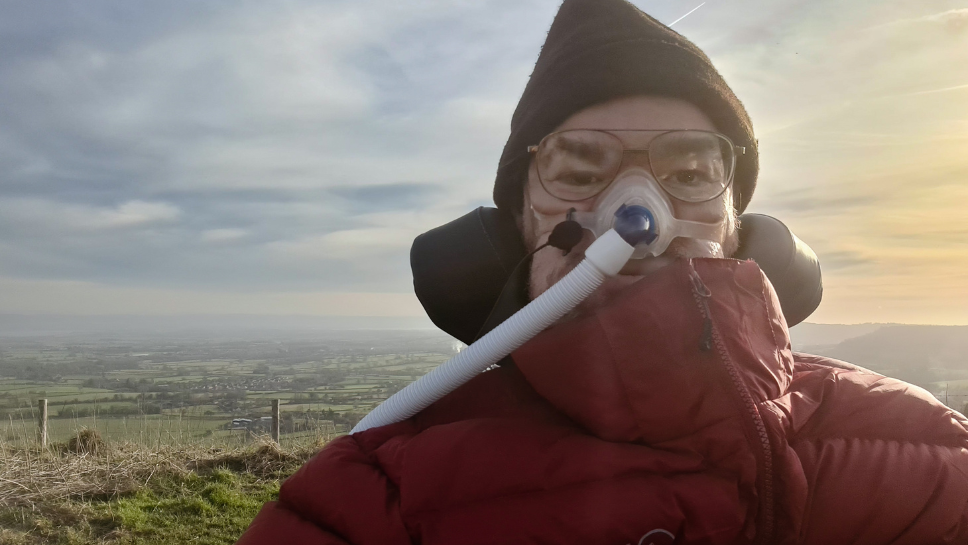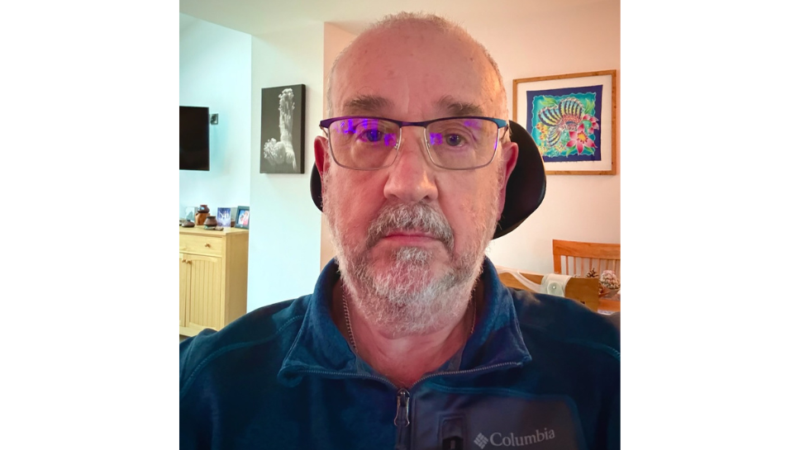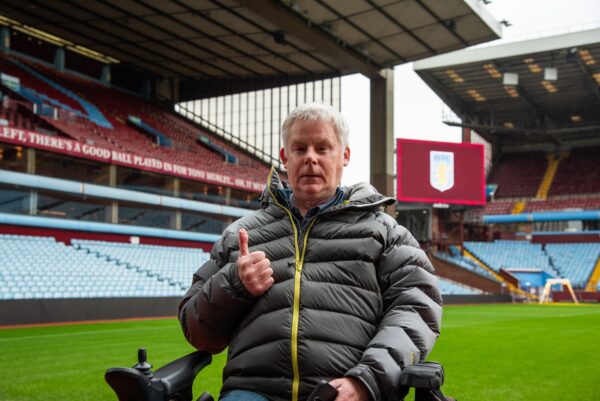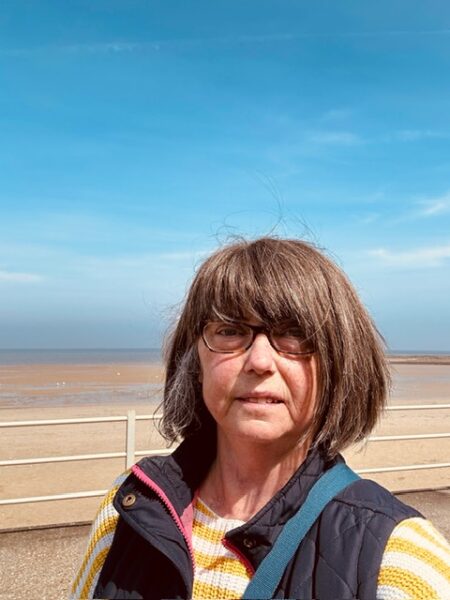Daniel believes everyone should have the chance to make the world a better place – and that when an opportunity knocks, you need to grab it with both hands. The 48-year-old reflects on his time managing a global project pioneered by NASA, and on how living with Duchenne muscular dystrophy affects his life – but by no means defines it.
From volunteering for NASA to improving standards of care for people with Duchenne muscular dystrophy – this is Daniel’s story

Finding something positive you can do is so important, especially when you’re living with a condition like Duchenne muscular dystrophy.
I’ve always been interested in computers and science, hence studying Applied Physics at Oxford Brookes University. When I came across an opportunity to get involved in a project with NASA the decision was a no-brainer.
It was a fantastic experience. During my time on the project, I was treated as an equal and my involvement over the years gave me greater confidence in my abilities.
And as nearly everything relating to the project was online, the fact that I’m a disabled person living with Duchenne muscular dystrophy was never a factor.
Becoming the Project Manager of an international NASA project
I’ve always liked the idea of combining my interest in science and technology with my passion for helping people. NASA WorldWind gave me the chance to do just that.
NASA WorldWind is a global online project. It’s a powerful planetary 3D engine, which allows people to create interactive 3D models made up of geographical information. As an online tool, WorldWind helps organisations monitor weather patterns, visualise cities and terrain, and educate people about the Earth.
I originally got involved by responding to a call for online community volunteers. After a few years, I found myself in charge of managing the volunteer open-source community, which included liaising with the NASA project manager.
The project eventually shifted focus away from education and since then, I’ve become less involved – but I still keep in touch with the team and dip my toe back in from time to time.
With everything being online, my disability wasn’t a factor
Looking back at my NASA WorldWind experience, I really enjoyed being treated as an equal and earning the respect of so many highly intelligent people.
During my time participating in and managing the open-source community, I was never asked about my disability – nor did I mention it for the most part. It wasn’t really until the end of the project that I chose to be more open about being disabled.
I think it’s important for everyone – whether they’re a disabled or non-disabled person – to have the chance to contribute to something bigger than themselves.
In general, people’s reactions to learning I’m disabled are fairly positive, but there are, of course, exceptions. Being out and about in public isn’t easy as a disabled person. People often stare, make comments under their breath, or can even be patronising – bending down and talking to you loudly as if you’re a child, for example.
I don’t let any of that stop me from living my life, but it was nice not to have to worry about any of it during my time on NASA WorldWind. With everything being online, my disability wasn’t a factor.
Overall, I’m just very grateful for the experience – to have been surrounded by so many people who were experts in their fields and get the chance to learn so many new skills.
Being valued for your skills and experience
Being able to volunteer, work, and contribute to positive projects like NASA WorldWind allows me to feel like I can give something back to society.
Don’t get me wrong, I love getting out and enjoying life. I enjoy exploring the countryside in my wheelchair, visiting museums, and pursuing hobbies like photography or computers. I’ve even been an extra on a BBC drama series.
But I think it’s important for everyone – whether they’re disabled or non-disabled people – to have the chance to contribute to something bigger than themselves.
Many disabled people experience low self-esteem, or are made to feel like a drain on their family or society. Living with any long-term medical condition can take a toll on your mental health, too – in the past, I’ve suffered from agoraphobia, undiagnosed depression, and irregular sleeping patterns.
Being able to “give something back” can help alleviate the impact of these factors – partly because you’re being valued for your skills and knowledge.
And it doesn’t need to be just one thing. Since getting involved with the NASA project, I’ve been a trustee of two charities, volunteered with local and national charities, and provided advice and guidance which has helped to improve standards of care for adults living with Duchenne.
Many of the hardest things I’ve been through have nothing to do with my condition
My advice to anyone living with or being diagnosed with a muscle-wasting disease is to try to live life the way you want. Do the things you want to do and push yourself.
Life isn’t easy for anyone – we’re all just trying to make the most of it. We all go through pain, fear, loss, and heartbreak. Many of the hardest things I’ve been through in my life have nothing to do with having Duchenne muscle dystrophy.
Now, I’m not saying having a muscle wasting condition is easy. There will be things you can never do, things you will never have. Seemingly simple things like giving friends a hug, holding a baby, reaching out and touching someone’s hand to give them emotional support, or fussing a pet become difficult.
Sometimes it may even feel like it’s all too much.
But there will also be opportunities that others may never have. Grab those opportunities, even if they are scary; they will teach you something, even if you fail.
If you’re interested in getting involved in something positive, MDUK are looking for volunteers to support the vital work we carry out to help people living with muscle-wasting conditions. And if you’re interested in learning more about Daniel, you can visit his website to check out his photography and read his blog.


